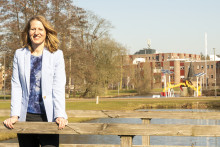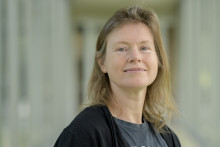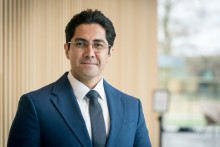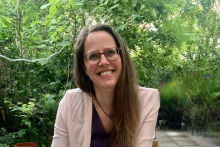The apple still doesn't fall far from the tree, as it turns out, because Eysink grew up in a teacher's family. 'My father is a well-known teacher in Hengelo.' How people think and learn has always fascinated her. A study in Psychology and Cognitive Sciences at the Radboud University of Nijmegen was an obvious choice. For her PhD research, she returned to her native soil. 'I liked it so much here that I stayed,' she beams. She has been a professor at UT since 2023 now.
Multiple Intellectual giftedness
Cognitive science – Eysink's field of expertise – revolves around understanding processes such as learning, problem-solving and language processing. AI integration is also an important aspect today. Her work consists of describing research as well as developing teaching materials. She herself is mainly interested in differentiation and highly gifted students:
'How do you challenge gifted students sufficiently, without isolating them too much from the group? And how can you make it easy for a teacher who has to differentiate (offer the teaching material at different learning levels in a class, ed.), but still wants to keep the class together? I think AI can help much more than it already does.'
Customisation per student with AI
She explains that there is a difference between convergent and divergent differentiation. With convergent differentiation, the teacher offers the teaching material in several ways, but everyone ends up at the same learning point. With divergent differentiation, the outcome can also differ, with some students simply learning more than the rest.
'I'm in the second camp, yes. Why does the gifted student have to hold back because otherwise the rest will not keep up? That is highly demotivating. At the same time, it is still quite a challenge for a teacher to give an average class of 30 students all customised explanations but at the same time tick off the standard learning objectives for everyone. I think AI can offer a lot of help here, by challenging students at their own pace and level. Especially for students who need extra attention. This can save teachers a lot of work and at the same time help pupils understand the material in a much more personal way. I'm going to talk about that in my inaugural lecture as well.'
Digital experiments
On average, Eysink works on developing digital learning environments and simulations, which students can actively work with, so-called inquiry-based learning. And she is researching their effectiveness.
Isn’t she boosting students’ screen time like that? 'Fair question. Of course we are investigating both digital and non-digital teaching methods. They can reinforce each other. The advantage of simulations is that you can show things that are not easily visible in real life. For example, in biology class, you can play back how a plant grows at an accelerated pace, or show the effect of predators on a population. In physics and chemistry, students can safely do digital experiments or mix chemicals and see how they react. That ultimately gives a much deeper understanding of how things work.'
'And they already spend so much time behind their computers that it's better to do it in a way that has been proven to be effective. Of course, we don't think that everything should be done digitally. We sometimes also have students build their own electronic setups to see how electricity works. We look for the perfect combination of direct explanation and putting that knowledge 'into practice' in a simulation.'
Science savvy
She also investigates how she can teach students science savviness. 'Ultimately, you want them to be able to hold their own in society. That is why they must learn to critically assess information and learn to argue. We are investigating how we can support them in this. For example, we let the students formulate a hypothesis and then develop it further, after which they have to draw a conclusion.'
'A misunderstanding about gifted children is that they don't need support'
The effectiveness of these methods can also differ per student. Eysink: 'Some students are more gifted than others. For example, some already have more prior knowledge or simply learn more easily. A misunderstanding about gifted children is that they need less support. They are still children in the end. You have to find a balance: they don't like too much structure, but neither do they everything spelled out for them. By looking at how students learn and what problems they experience, you can offer targeted support. So that's where differentiation comes in again.'
Will AI eventually replace the teacher? 'Never,' she says resolutely. 'The social element, the interaction with students, is indispensable. For everyone.'
Inauguration
Eysink's inaugural lecture, scheduled for 15 May, is titled 'The pupil at the centre'. The aim of her inaugural lecture is to show how important it is to focus on the needs of pupils. She will also discuss the role of the teacher and the benefits of collaboration in the classroom. In the meantime, she will emphasise the importance of informal learning and the opportunities that technological developments, such as AI, can do for education.





